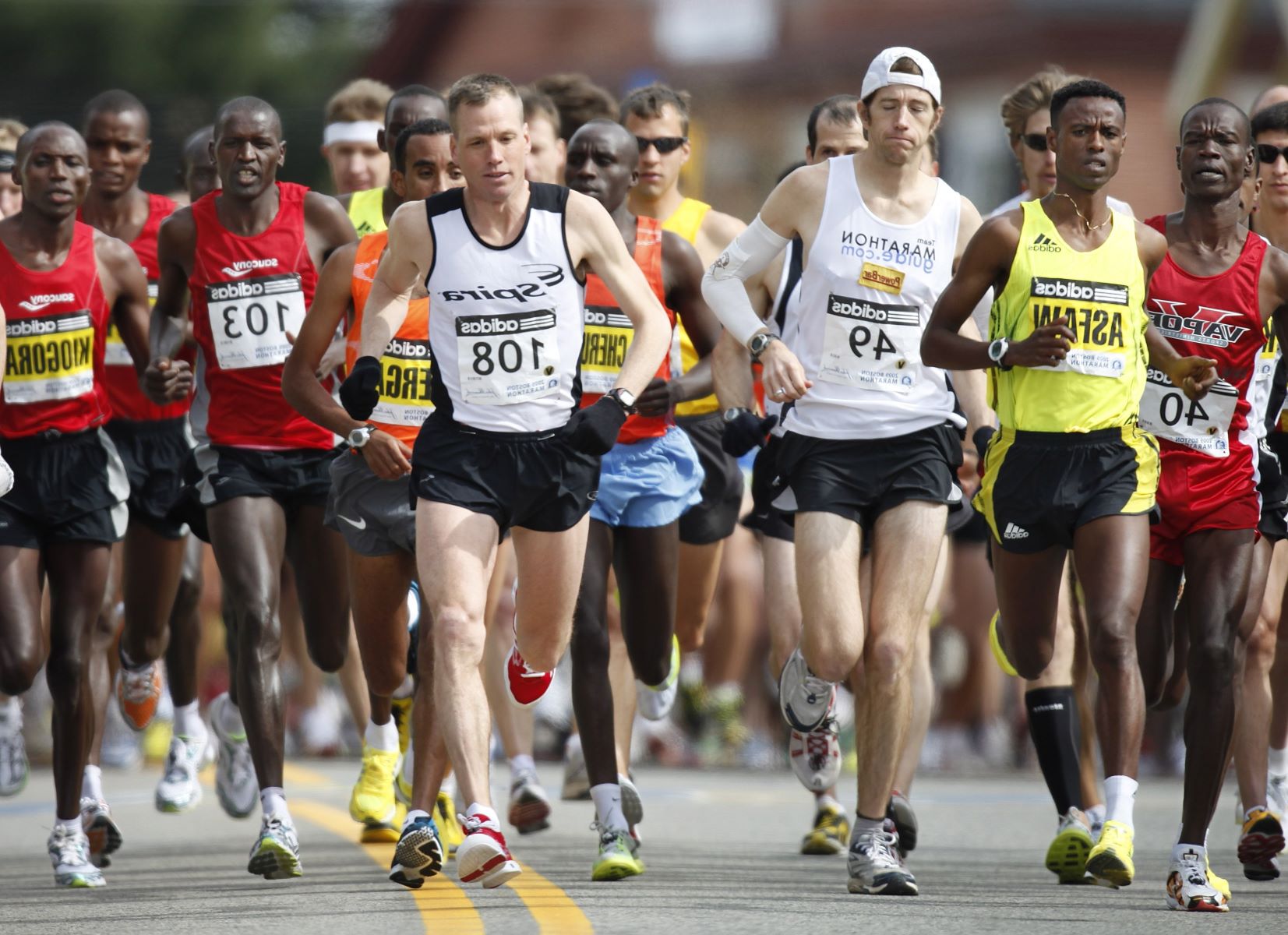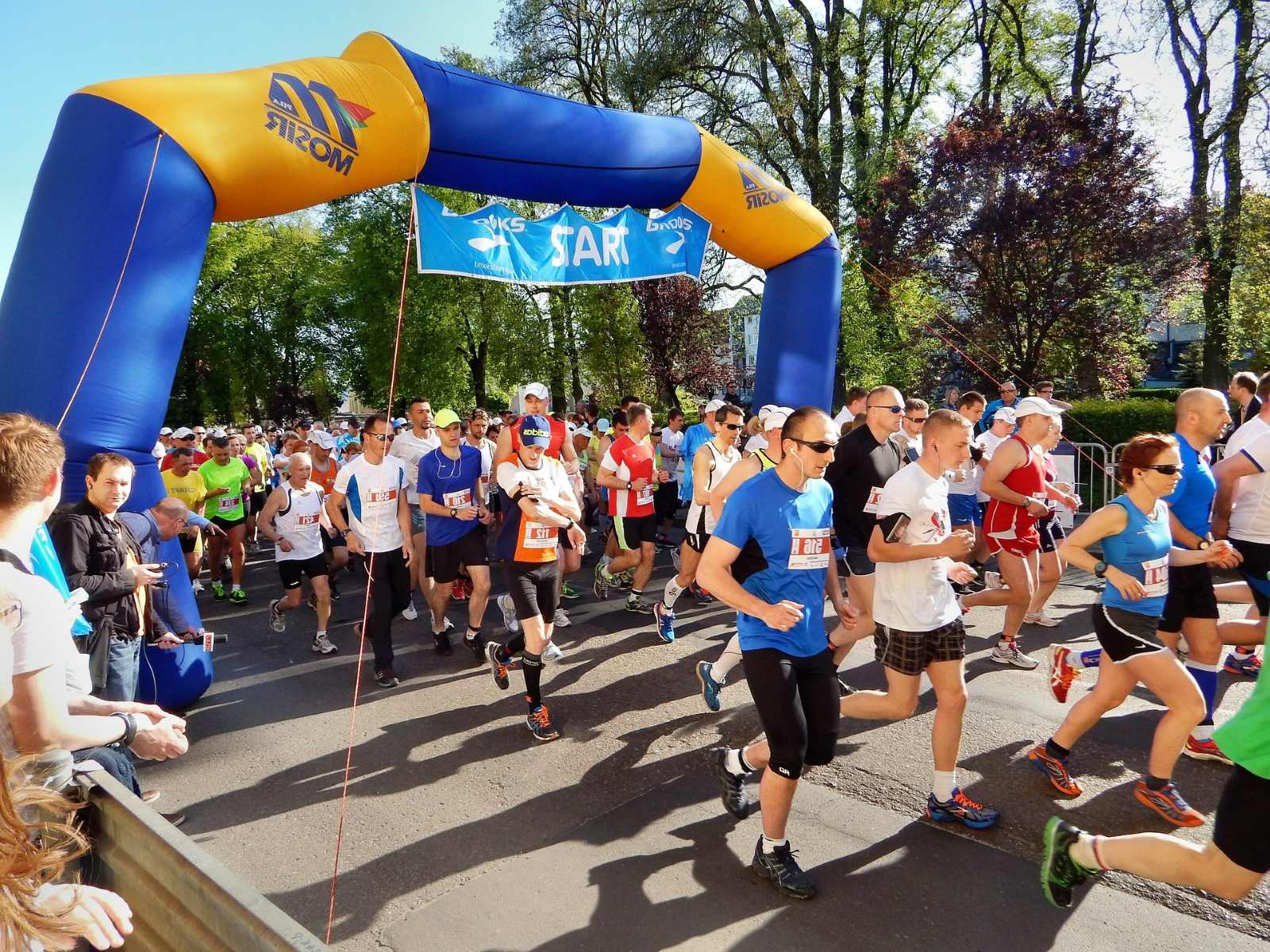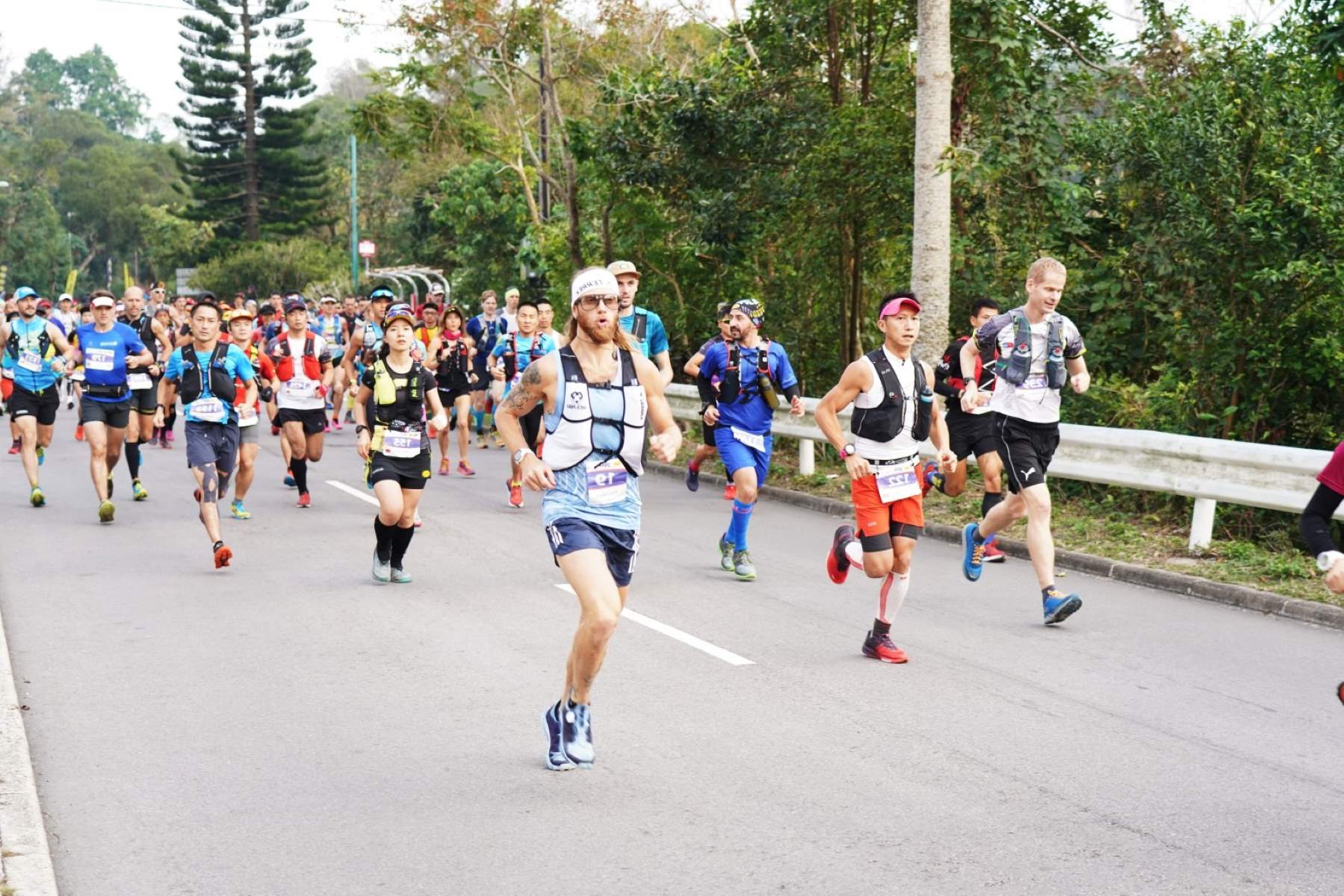Home>Training & Techniques>Training Plans>A Comprehensive 16-Week Marathon Training Plan For Runners Aiming To Achieve A Sub-3:15 Finish


Training Plans
A Comprehensive 16-Week Marathon Training Plan For Runners Aiming To Achieve A Sub-3:15 Finish
Published: March 2, 2024
Discover a comprehensive 16-week marathon training plan designed for runners aiming to achieve a sub-3:15 finish. Explore effective training plans to reach your goals.
(Many of the links in this article redirect to a specific reviewed product. Your purchase of these products through affiliate links helps to generate commission for Therunningadvisor.com, at no extra cost. Learn more)
Table of Contents
- Introduction
- Setting Your Sub-3:15 Marathon Goal
- Understanding the 16-Week Training Plan
- Week 1-4: Building a Strong Base
- Week 5-8: Increasing Endurance and Speed
- Week 9-12: Fine-Tuning Your Training
- Week 13-16: Tapering and Race Preparation
- Nutrition and Hydration Guidelines
- Injury Prevention and Recovery Strategies
- Mental Preparation and Race Day Strategies
- Conclusion
Introduction
Embarking on a marathon journey is a remarkable feat that demands dedication, perseverance, and a well-structured training plan. For runners aspiring to achieve a sub-3:15 finish, the 16-week marathon training plan serves as a roadmap to success. This comprehensive guide is designed to equip you with the knowledge and strategies essential for conquering the 26.2-mile distance with confidence and strength.
Throughout this training plan, you will immerse yourself in a transformative journey that extends beyond physical endurance. It encompasses mental fortitude, strategic preparation, and a holistic approach to wellness. As you lace up your running shoes and set your sights on the sub-3:15 marathon goal, you are embarking on a profound personal odyssey that will test your limits and unveil your true potential.
The 16-week marathon training plan is not merely a series of workouts and long runs; it is a narrative of perseverance, resilience, and unwavering determination. Each week is a chapter in your story, marked by progress, setbacks, and moments of triumph. As you follow this meticulously crafted plan, you will witness the evolution of your strength, endurance, and mental resolve, culminating in a triumphant finish on race day.
This training plan is not solely about crossing the finish line within a specific time frame; it is about embracing the process, relishing the journey, and discovering the depths of your capabilities. It is a testament to the human spirit's capacity for growth, resilience, and unwavering commitment. As you delve into the intricacies of this 16-week training plan, you are embarking on a transformative expedition that will leave an indelible mark on your life and running journey.
With each stride, each interval, and each moment of self-discovery, you are forging a path toward greatness. The sub-3:15 marathon goal is not merely a target; it is a beacon that illuminates the path to self-realization, pushing you to surpass perceived limitations and redefine what is possible. As you embrace this training plan, you are not just preparing for a marathon; you are embarking on a profound voyage of self-discovery, resilience, and unwavering determination.
In the subsequent sections, we will delve into the intricacies of the 16-week marathon training plan, unraveling its components, strategies, and the holistic approach it embodies. Together, we will navigate the terrain of physical conditioning, mental fortitude, and strategic preparation, equipping you with the tools and insights necessary to embark on this transformative journey.
Read more: A Comprehensive 16-Week Marathon Training Plan For Runners Aiming To Achieve A Sub-3:00 Finish
Setting Your Sub-3:15 Marathon Goal
Setting a sub-3:15 marathon goal is a significant undertaking that requires careful consideration and strategic planning. It represents a formidable challenge that demands unwavering commitment, meticulous preparation, and a steadfast belief in your capabilities. As you embark on this journey, it is essential to approach your goal with a blend of ambition, realism, and a deep understanding of your current fitness level.
To set your sub-3:15 marathon goal, it is crucial to assess your running history, recent race performances, and overall fitness. Understanding your current capabilities and areas for improvement will provide valuable insights into the feasibility of achieving a sub-3:15 finish. Additionally, consider consulting with experienced runners, coaches, or fitness professionals to gain perspective on the level of dedication and training required to reach this ambitious milestone.
Furthermore, setting a sub-3:15 marathon goal necessitates a comprehensive evaluation of your training schedule, lifestyle commitments, and potential obstacles that may impact your preparation. By meticulously analyzing these factors, you can develop a realistic timeline for your training, ensuring that it aligns with your personal and professional responsibilities.
In addition to practical considerations, it is essential to cultivate a mindset of determination, resilience, and unwavering focus. Embracing a positive and tenacious outlook will fortify your resolve as you navigate the challenges and triumphs of the training journey. Visualizing your sub-3:15 marathon goal with clarity and conviction will fuel your motivation and instill a sense of purpose in every training session and long run.
As you set your sights on the sub-3:15 marathon goal, it is imperative to establish incremental milestones and benchmarks throughout your training plan. Breaking down the overarching goal into manageable segments will provide a sense of progression and enable you to track your development effectively. Celebrating these milestones along the way will bolster your confidence and reinforce your commitment to the ultimate objective.
Ultimately, setting your sub-3:15 marathon goal is a multifaceted process that encompasses introspection, strategic planning, and a resolute mindset. By approaching this goal with a blend of realism, ambition, and unwavering determination, you are laying the foundation for a transformative journey that will test your limits, unveil your potential, and culminate in a triumphant sub-3:15 marathon finish.
Understanding the 16-Week Training Plan
The 16-week marathon training plan is a meticulously crafted roadmap designed to prepare runners for the arduous yet exhilarating journey of conquering the 26.2-mile distance. This comprehensive plan is structured to optimize physical conditioning, mental fortitude, and strategic preparation, culminating in a sub-3:15 marathon finish. Understanding the intricacies of this training plan is essential for harnessing its full potential and embarking on a transformative journey of self-discovery and athletic achievement.
The 16-week timeframe is strategically chosen to provide runners with a balanced progression from foundational conditioning to peak performance. Each phase of the training plan is meticulously calibrated to enhance endurance, speed, and mental resilience, ensuring that runners are primed for the demands of the marathon distance. By delineating the training plan into distinct phases, runners can systematically build their physical and mental capabilities, gradually increasing their mileage and intensity while allowing for adequate recovery and adaptation.
The training plan encompasses a diverse array of workouts, including long runs, tempo runs, interval training, cross-training, and recovery sessions. These varied training modalities serve to optimize different aspects of a runner's fitness, including aerobic capacity, lactate threshold, muscular endurance, and overall resilience. By incorporating a multifaceted approach to training, the plan aims to cultivate a well-rounded athlete capable of tackling the rigors of the marathon distance with confidence and strength.
Furthermore, the 16-week training plan integrates strategic tapering and race preparation in the final phase, ensuring that runners arrive at the start line in peak physical condition and mental readiness. The tapering period allows for a gradual reduction in training volume while maintaining intensity, facilitating recovery and optimizing performance on race day. Additionally, the plan incorporates race-specific simulations and mental preparation strategies to equip runners with the tools necessary to navigate the challenges of the marathon and unleash their full potential when it matters most.
Understanding the 16-week training plan entails embracing its holistic approach, recognizing that success in the marathon extends beyond physical conditioning. It encompasses mental fortitude, strategic preparation, and a profound commitment to the journey. By immersing oneself in the nuances of this training plan, runners can unlock their true potential, transcend perceived limitations, and emerge as resilient, empowered athletes ready to achieve a sub-3:15 marathon finish.
Week 1-4: Building a Strong Base
The initial phase of the 16-week marathon training plan focuses on laying a robust foundation to support the rigorous demands of long-distance running. During weeks 1-4, the primary emphasis is on building aerobic endurance, enhancing muscular strength, and acclimating the body to the escalating training volume. This phase serves as a pivotal launchpad for the subsequent stages of the training plan, setting the stage for progressive development and peak performance.
Key Components of Weeks 1-4:
-
Base Mileage Build-Up: The training plan commences with a gradual increase in weekly mileage, allowing the body to adapt to the escalating demands of distance running. Long, steady-paced runs form the cornerstone of this phase, cultivating aerobic endurance and fortifying the musculoskeletal system.
-
Strength and Mobility Work: In conjunction with mileage buildup, runners engage in strength training and mobility exercises to fortify key muscle groups, improve running economy, and mitigate the risk of injuries. Targeted strength workouts and flexibility routines contribute to overall resilience and form a crucial component of the base-building phase.
-
Pace Familiarization: Weeks 1-4 also involve familiarizing runners with target marathon pace through tempo runs and sustained efforts at goal race pace. This strategic integration of pace-specific training lays the groundwork for developing a keen sense of pacing and rhythm, essential for achieving a sub-3:15 marathon finish.
-
Recovery and Adaptation: Adequate recovery and adaptation are prioritized during this phase, allowing the body to assimilate the training stimulus and fortify its physiological capacities. Rest days, gentle cross-training, and mindful recovery practices are woven into the training plan to optimize adaptation and mitigate the risk of overtraining.
The Significance of Building a Strong Base:
The foundational phase of weeks 1-4 is instrumental in preparing runners for the progressive intensification of training in subsequent weeks. By prioritizing aerobic development, muscular resilience, and pace acclimatization, this phase equips runners with the essential physiological and mental framework necessary for enduring the rigors of marathon training. Moreover, the emphasis on injury prevention, recovery, and holistic conditioning fosters a sustainable and resilient approach to long-term athletic development.
As runners navigate through the initial weeks of the training plan, they lay the groundwork for a transformative journey characterized by incremental growth, unwavering determination, and a steadfast commitment to the sub-3:15 marathon goal. The base-building phase serves as a testament to the meticulous planning and holistic approach that underpin the 16-week training plan, setting the stage for the remarkable evolution and triumphs that await in the subsequent phases.
Week 5-8: Increasing Endurance and Speed
As runners transition into weeks 5-8 of the 16-week marathon training plan, the focus shifts towards enhancing both endurance and speed, marking a pivotal phase in the preparation for the sub-3:15 marathon goal. This segment of the training plan is strategically designed to elevate the runners' aerobic capacity, fortify their muscular endurance, and cultivate the ability to sustain faster paces over extended distances. The integration of targeted workouts and progressive mileage escalation during this phase aims to optimize the physiological adaptations necessary for achieving a sub-3:15 marathon finish.
Key Components of Weeks 5-8:
-
Long Run Progression: The long runs during this phase are strategically extended to bolster aerobic endurance and mental resilience. Gradually increasing the distance of the long run allows runners to adapt to prolonged efforts, simulating the demands of the marathon distance and fortifying their capacity to sustain a strong pace throughout the race.
-
Speed Workouts: Incorporating structured speed workouts such as intervals, fartleks, and hill repeats serves to enhance anaerobic capacity, improve running economy, and cultivate the ability to maintain faster paces. These targeted speed sessions are instrumental in developing the neuromuscular coordination and cardiovascular efficiency necessary for achieving a sub-3:15 marathon finish.
-
Tempo Runs: Weeks 5-8 feature an intensified focus on tempo runs, aimed at familiarizing runners with sustained efforts at race pace or slightly faster. Tempo runs facilitate the development of lactate threshold, enabling runners to sustain challenging paces for extended durations and enhancing their ability to manage race-day intensity effectively.
-
Recovery and Adaptation: Amidst the escalating training intensity, prioritizing recovery and adaptation remains paramount. Strategic rest days, gentle cross-training, and mindful recovery practices are interwoven into the training plan to optimize recovery, mitigate the risk of overtraining, and ensure that runners remain resilient and injury-free.
Significance of Increasing Endurance and Speed:
The emphasis on increasing endurance and speed during weeks 5-8 represents a critical juncture in the training plan, where runners undergo a transformative progression in their physiological capacities and mental fortitude. By strategically integrating long run progression, speed workouts, and tempo runs, this phase aims to fortify runners' ability to sustain challenging paces over extended distances, a cornerstone of achieving a sub-3:15 marathon finish.
As runners navigate through this phase, they undergo a profound evolution, transcending their previous limitations and embracing the formidable challenges that lie ahead. The meticulous calibration of training stimuli, recovery practices, and performance benchmarks underscores the holistic and strategic approach that defines the 16-week marathon training plan, setting the stage for the remarkable growth and triumphs that await in the subsequent phases.
Week 9-12: Fine-Tuning Your Training
Weeks 9-12 of the 16-week marathon training plan mark a pivotal phase focused on fine-tuning runners' physical conditioning, mental fortitude, and race-specific preparedness. This segment represents a critical juncture in the training journey, where the cumulative effects of foundational conditioning and intensified training modalities converge to optimize runners' readiness for the sub-3:15 marathon goal.
Key Components of Weeks 9-12:
-
Peak Mileage and Intensity: During this phase, runners experience a peak in both training mileage and intensity, culminating in the highest volume of the training plan. The strategic escalation of training stimuli aims to fortify runners' aerobic capacity, muscular endurance, and mental resilience, preparing them for the demands of the marathon distance.
-
Race Pace Simulations: Incorporating race pace simulations and marathon-specific workouts allows runners to acclimate to the physical and mental demands of sustaining target race pace over prolonged efforts. These simulations serve to instill confidence, refine pacing strategies, and cultivate a keen sense of race-day intensity, essential for achieving a sub-3:15 marathon finish.
-
Tapering Strategies: Commencing the tapering phase towards the latter part of this segment, the training plan strategically reduces training volume while maintaining intensity, facilitating recovery and optimizing performance on race day. Tapering allows runners to shed accumulated fatigue, fine-tune their physiological readiness, and arrive at the start line in peak condition.
-
Mental Preparation: Weeks 9-12 also emphasize mental preparation strategies, including visualization, positive affirmations, and race-day scenario planning. Cultivating a resilient and focused mindset is integral to navigating the challenges of the marathon, and these mental preparation techniques equip runners with the tools necessary to overcome adversity and unleash their full potential on race day.
Significance of Fine-Tuning Your Training:
The fine-tuning phase of weeks 9-12 represents a culmination of the training plan's progressive evolution, where runners undergo a transformative refinement of their physical and mental readiness. The strategic integration of peak mileage, race pace simulations, tapering, and mental preparation serves to optimize runners' preparedness for the sub-3:15 marathon goal, ensuring that they approach race day with confidence, resilience, and unwavering determination.
As runners navigate through this phase, they undergo a profound metamorphosis, transcending their previous capabilities and embracing the formidable challenges that lie ahead. The meticulous calibration of training stimuli, recovery practices, and mental conditioning underscores the holistic and strategic approach that defines the 16-week marathon training plan, setting the stage for the remarkable growth and triumphs that await in the subsequent phases.
Week 13-16: Tapering and Race Preparation
As runners enter the final phase of the 16-week marathon training plan, the focus shifts towards tapering and meticulous race preparation. Weeks 13-16 represent a critical juncture where the cumulative effects of training, recovery, and mental fortitude converge to optimize runners' readiness for the sub-3:15 marathon goal. This phase is characterized by strategic tapering, race-specific simulations, and mental preparation, ensuring that runners arrive at the start line in peak physical condition and unwavering mental resilience.
Key Components of Weeks 13-16:
-
Tapering Strategies: The tapering phase is initiated during weeks 13-16, involving a gradual reduction in training volume while maintaining intensity. This strategic taper allows runners to shed accumulated fatigue, optimize glycogen stores, and repair any lingering micro-damage, ensuring that they are primed for peak performance on race day.
-
Race-Specific Simulations: Incorporating race-specific simulations and marathon-paced workouts allows runners to acclimate to the physical and mental demands of sustaining target race pace. These simulations serve to instill confidence, refine pacing strategies, and cultivate a keen sense of race-day intensity, essential for achieving a sub-3:15 marathon finish.
-
Mental Preparation: Weeks 13-16 emphasize mental preparation strategies, including visualization, positive affirmations, and race-day scenario planning. Cultivating a resilient and focused mindset is integral to navigating the challenges of the marathon, and these mental preparation techniques equip runners with the tools necessary to overcome adversity and unleash their full potential on race day.
-
Nutrition and Hydration Planning: Fine-tuning nutrition and hydration strategies is paramount during this phase, ensuring that runners optimize their fueling and hydration practices for race day. Strategic attention to pre-race nutrition, hydration protocols, and race-day fueling plans is essential for sustaining energy levels and optimizing performance throughout the marathon.
Significance of Tapering and Race Preparation:
The tapering and race preparation phase of weeks 13-16 represents the culmination of the 16-week training plan, where runners undergo a transformative refinement of their physical conditioning and mental readiness. The strategic integration of tapering, race-specific simulations, and mental preparation serves to optimize runners' preparedness for the sub-3:15 marathon goal, ensuring that they approach race day with confidence, resilience, and unwavering determination.
As runners navigate through this phase, they undergo a profound metamorphosis, transcending their previous capabilities and embracing the formidable challenges that lie ahead. The meticulous calibration of training stimuli, recovery practices, and mental conditioning underscores the holistic and strategic approach that defines the 16-week marathon training plan, setting the stage for the remarkable growth and triumphs that await on race day.
Nutrition and Hydration Guidelines
Optimal nutrition and hydration are pivotal components of a successful marathon training plan, particularly in the final weeks leading up to the race. As runners approach the culmination of their 16-week journey towards a sub-3:15 marathon finish, strategic attention to fueling and hydration becomes paramount in ensuring peak performance and resilience on race day.
Pre-Race Nutrition Planning
In the weeks preceding the marathon, runners should focus on fine-tuning their pre-race nutrition strategies. This involves optimizing carbohydrate intake to maximize glycogen stores, essential for sustaining energy levels during the marathon. Emphasizing complex carbohydrates such as whole grains, fruits, and vegetables while moderating fat and protein intake can facilitate efficient glycogen replenishment and enhance endurance capacity.
Additionally, runners should pay attention to meal timing, ensuring that they consume a balanced, easily digestible meal 2-3 hours before the race. This meal should provide a blend of carbohydrates, moderate protein, and minimal fat to support sustained energy release and minimize gastrointestinal distress during the race.
Hydration Protocols
Hydration planning is equally critical, with runners focusing on maintaining optimal fluid balance in the days leading up to the marathon. Strategic hydration involves consuming adequate fluids while monitoring urine color to gauge hydration status. Ensuring that urine appears pale yellow indicates proper hydration, while dark urine may signal dehydration, necessitating increased fluid intake.
During the tapering phase, runners should also be mindful of electrolyte balance, particularly sodium and potassium levels. Incorporating electrolyte-rich foods such as bananas, nuts, and leafy greens can support optimal electrolyte levels, crucial for muscle function and hydration regulation.
Race-Day Fueling Strategies
On race day, runners should adhere to a meticulously crafted fueling plan, incorporating a balance of carbohydrates, electrolytes, and fluids to sustain energy levels and mitigate the risk of dehydration. This involves consuming easily digestible carbohydrates such as energy gels, sports drinks, and small snacks at strategic intervals throughout the race.
Striking a balance between fueling and hydration is essential, with runners aiming to consume approximately 30-60 grams of carbohydrates per hour while hydrating at regular intervals. Adhering to a personalized fueling schedule, based on individual tolerance and energy needs, is instrumental in optimizing performance and resilience during the marathon.
By meticulously attending to nutrition and hydration guidelines in the final weeks and on race day, runners can optimize their physiological readiness, sustain energy levels, and fortify their resilience, culminating in a triumphant sub-3:15 marathon finish.
Injury Prevention and Recovery Strategies
In the pursuit of a sub-3:15 marathon finish, injury prevention and recovery strategies play a pivotal role in sustaining runners' physical resilience and optimizing their training progression. The 16-week marathon training plan necessitates a holistic approach that encompasses proactive injury prevention measures and strategic recovery protocols to mitigate the risk of overuse injuries and ensure runners remain resilient throughout their training journey.
Proactive Injury Prevention Measures
The training plan integrates proactive injury prevention measures that aim to fortify runners' musculoskeletal integrity and mitigate the risk of common running-related injuries. This includes a comprehensive focus on:
-
Strength and Mobility Work: Incorporating targeted strength training exercises and mobility routines is instrumental in fortifying key muscle groups, improving running economy, and mitigating the risk of overuse injuries. By prioritizing muscular resilience and joint mobility, runners can enhance their capacity to withstand the rigors of marathon training.
-
Dynamic Warm-Up and Cool-Down: Emphasizing dynamic warm-up routines before training sessions and races, coupled with thorough cool-down practices, serves to optimize muscle elasticity, circulation, and joint mobility. These practices are integral in preparing the body for training stimuli and expediting recovery post-exertion.
-
Cross-Training and Recovery Sessions: Integrating low-impact cross-training modalities such as swimming, cycling, or yoga, alongside dedicated recovery sessions, provides runners with opportunities to diversify their training stimuli, mitigate repetitive strain, and facilitate active recovery.
Strategic Recovery Protocols
Strategic recovery protocols are interwoven into the training plan to optimize runners' adaptation to training stimuli, expedite recovery, and minimize the risk of overtraining. Key components of the recovery strategies include:
-
Adequate Rest and Sleep: Prioritizing adequate rest and quality sleep is paramount in facilitating physiological adaptation, hormone regulation, and neuromuscular recovery. The training plan emphasizes the significance of rest days and encourages runners to adhere to consistent sleep patterns to optimize recovery.
-
Nutrition and Hydration: Strategic attention to post-training nutrition and hydration is essential for replenishing glycogen stores, facilitating muscle repair, and optimizing recovery. Emphasizing a blend of carbohydrates and protein within the post-training nutrition window supports efficient recovery and adaptation.
-
Foam Rolling and Self-Myofascial Release: Incorporating foam rolling and self-myofascial release techniques aids in alleviating muscular tension, enhancing circulation, and expediting recovery. These practices contribute to mitigating muscle soreness and promoting optimal tissue recovery.
By integrating proactive injury prevention measures and strategic recovery protocols, the 16-week marathon training plan equips runners with the tools necessary to sustain physical resilience, optimize training adaptation, and mitigate the risk of overuse injuries. This comprehensive approach underscores the plan's commitment to fostering sustainable athletic development and ensuring that runners are primed for a triumphant sub-3:15 marathon finish.
Mental Preparation and Race Day Strategies
Mental preparation is a cornerstone of achieving a sub-3:15 marathon finish, encompassing a blend of resilience, focus, and strategic race day planning. As runners approach the culmination of their 16-week training journey, cultivating a resilient mindset and implementing race day strategies are pivotal in optimizing performance and navigating the challenges of the marathon.
Visualization and Positive Affirmations
Engaging in visualization exercises, runners can mentally rehearse the race scenario, envisioning themselves conquering challenging segments, maintaining a strong pace, and crossing the finish line triumphantly. This mental imagery serves to instill confidence, refine pacing strategies, and cultivate a resolute mindset essential for enduring the rigors of the marathon.
Positive affirmations play a complementary role, empowering runners to embrace a mindset of determination, self-belief, and unwavering resolve. By internalizing positive self-talk and affirmations, runners can bolster their mental fortitude, counteract self-doubt, and channel their focus towards achieving their sub-3:15 marathon goal.
Race Day Scenario Planning
Strategic race day scenario planning involves meticulous attention to logistical details, including pre-race routines, pacing strategies, and contingency plans. Runners should familiarize themselves with the race course, aid station locations, and elevation profiles, enabling them to adapt their pacing and fueling strategies accordingly.
Additionally, formulating contingency plans for unforeseen circumstances, such as inclement weather or unexpected physical discomfort, empowers runners to approach race day with adaptability and resilience. By anticipating potential challenges and formulating response strategies, runners can navigate race day with confidence and composure, irrespective of external variables.
Embracing Race-Day Intensity
Embracing the intensity of race day involves cultivating a keen awareness of pacing, hydration, and mental resilience throughout the marathon. Runners should approach the race with a balanced blend of confidence and humility, respecting the distance while leveraging their training and mental preparation to sustain a strong, consistent effort.
Maintaining a present-focused mindset, runners can break the race into manageable segments, focusing on executing each mile with precision and determination. Embracing the ebbs and flows of the marathon, runners can draw upon their mental reserves, resilience, and strategic race day planning to navigate the inevitable challenges and triumphantly cross the finish line within the sub-3:15 goal.
In essence, mental preparation and race day strategies are integral components of achieving a sub-3:15 marathon finish. By cultivating a resilient mindset, engaging in strategic visualization, and formulating race day plans, runners can optimize their mental readiness and approach the marathon with confidence, determination, and unwavering focus.
Conclusion
As the 16-week marathon training plan draws to a close, runners stand at the precipice of a transformative journey that transcends physical conditioning and athletic achievement. This comprehensive training plan has served as a roadmap, guiding runners through a profound odyssey of resilience, determination, and unwavering commitment to the sub-3:15 marathon goal.
Throughout the meticulously crafted phases of base-building, endurance and speed development, fine-tuning, and tapering, runners have undergone a remarkable evolution, transcending their previous limitations and embracing the formidable challenges that lie ahead. Each phase of the training plan has been marked by incremental growth, unwavering determination, and a steadfast commitment to the sub-3:15 marathon goal.
The holistic approach of the training plan, encompassing physical conditioning, mental fortitude, and strategic preparation, underscores the profound depth of this journey. It is not merely about conquering 26.2 miles within a specific time frame; it is about embracing the process, relishing the journey, and discovering the depths of one's capabilities. The sub-3:15 marathon goal has served as a beacon, illuminating the path to self-realization, pushing runners to surpass perceived limitations, and redefine what is possible.
As runners stand on the cusp of race day, they carry with them the culmination of 16 weeks of unwavering dedication, perseverance, and resilience. The training plan has not only prepared them physically but has also fortified their mental resilience, equipping them with the tools necessary to navigate the challenges of the marathon and unleash their full potential when it matters most.
The sub-3:15 marathon goal is not merely a target; it is a testament to the human spirit's capacity for growth, resilience, and unwavering commitment. As runners embark on the final leg of this transformative journey, they carry with them the collective triumphs, setbacks, and moments of self-discovery that have shaped their preparation.
In the closing chapters of this training plan, runners are poised to inscribe a new chapter in their running journey, one marked by unwavering determination, resilience, and the triumphant realization of their sub-3:15 marathon goal. As they stand on the brink of this remarkable achievement, they embody the essence of the 16-week training plan—a testament to the indomitable human spirit, the pursuit of greatness, and the unwavering commitment to surpassing perceived limitations.
With each stride, each interval, and each moment of self-discovery, runners have forged a path toward greatness. The sub-3:15 marathon goal is not merely a finish line; it is a threshold to a new chapter, a testament to the transformative power of unwavering commitment, resilience, and the relentless pursuit of excellence.










